- Introduction to Instagram-Worthy Photos of Rakunan, Rakuto, and Rakuo
- Shosei-en Garden
- Nijo Castle
- Kitano Tenmangu Shrine
- Kyoto Imperial Palace
- To-ji Temple
- Kyoto Tower
- Nishiki Market
- Pontocho
- Rurikoin Temple
- Shimogamo Shrine (Kamo-mioya Shrine)
- Kamigamo Shrine
- Kifune Shrine
- Daitoku-ji Temple (Koto-in Temple)
- Sanzen-in Temple
- Aoi Matsuri
- Kurama-dera Temple
- Enko-ji Temple
- Kiyomizu-dera Temple
- Ginkaku-ji Temple
- Heian Shrine
- Yasaka Shrine
- Kennin-ji Temple
- Honen-in Temple
- Zenrin-ji Eikando Temple
- Sanneizaka
- Philosopher’s Path
- Sanjusangendo Temple
Introduction to Instagram-Worthy Photos of Rakunan, Rakuto, and Rakuo
Since Kyoto has many tourist attractions, it is recommended to plan your visit by dividing the city into areas: the eastern part (Rakuto), the western part (Rakusei), the southern part (Rakunan), the northern part (Rakuhoku), and the central part (Rakuo). In the central area of Kyoto, you can find Higashi Honganji, Nishi Honganji, Toji Temple, Nijo Castle, and Kitano Tenmangu Shrine. In the northern part, there are Kurama-dera Temple and Kifune Shrine, while in the eastern part, there are Kiyomizu-dera Temple and Ginkaku-ji Temple.
Shosei-en Garden
About 370 years ago, Shosei-en Garden was created on land given to Higashi Honganji Temple by the third shogun, Tokugawa Iemitsu. Designed by a famous gardener, the garden offers diverse and beautiful scenery known as the “Thirteen Views” and features various flowers throughout the seasons.
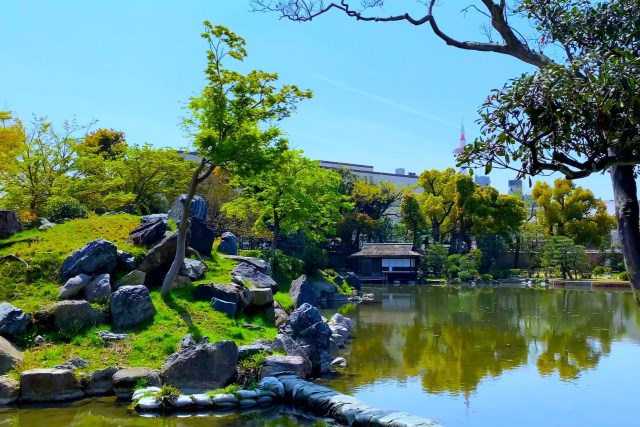
Instagram Worthiness:★★★★★
Photography Opportunity: All seasons
Location Information: ▶Map, Hours, Routes
Transportation Information: 4-minute bus ride from Kyoto Station
Nijo Castle
Nijo Castle was built in 1603 by Tokugawa Ieyasu, the first shogun of the Edo Shogunate, as his residence in Kyoto. It is also the historical site where the last shogun, Tokugawa Yoshinobu, declared the restoration of imperial rule in 1867. Registered as a World Heritage Site, it is a popular tourist destination and was the second most visited castle in Japan in 2020.
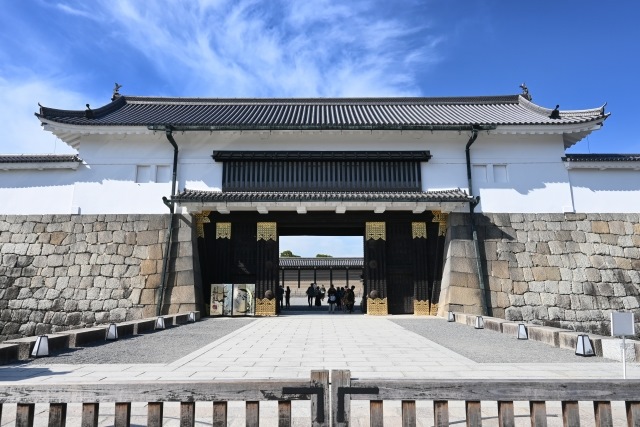
Instagram Worthiness:★★★★★
Photography Opportunity: All seasons
Location Information: ▶Map, Hours, Routes
Transportation Information: 16-minute bus ride from Kyoto Station
Kitano Tenmangu Shrine
Kitano Tenmangu Shrine is dedicated to Sugawara no Michizane, a scholar and politician from the Heian period, revered as the god of learning. It is famous for students praying for success in their exams. The main hall is a national treasure, built in the lavish Momoyama style of the Toyotomi Hideyoshi era. Known for its plum blossoms and autumn leaves, the shrine offers beautiful natural scenery throughout the year.
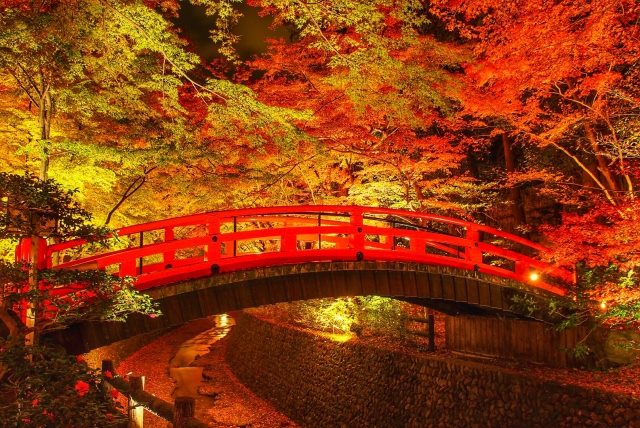
Instagram Worthiness:★★★★★
Photography Opportunity: All seasons
Location Information: ▶Map, Hours, Routes
Transportation Information: 33-minute bus ride from Kyoto Station
Kyoto Imperial Palace
The Kyoto Imperial Palace was the residence of the Emperor from the relocation of the capital to Kyoto in 794 until the Meiji Restoration. Rebuilt multiple times after fires, the current structure dates from 1854. The palace contains the “Takamikura,” the emperor’s special seat, used in the enthronement ceremonies of the Taisho and Showa emperors.
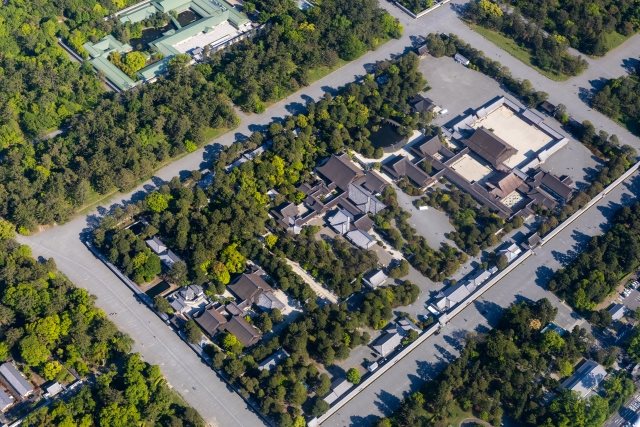
Instagram Worthiness:★★★★★
Photography Opportunity: All seasons
Location Information: ▶Map, Hours, Routes
Transportation Information: 7-minute bus ride from Kyoto Station
To-ji Temple
Founded by Emperor Kanmu in 796, To-ji Temple was later used by Kukai (Kobo Daishi) to spread the teachings of Shingon Buddhism. The temple complex includes many historical buildings, including Japan’s tallest wooden pagoda, and is designated as a national treasure and important cultural property. During autumn, the temple is illuminated, making it a popular photography spot.
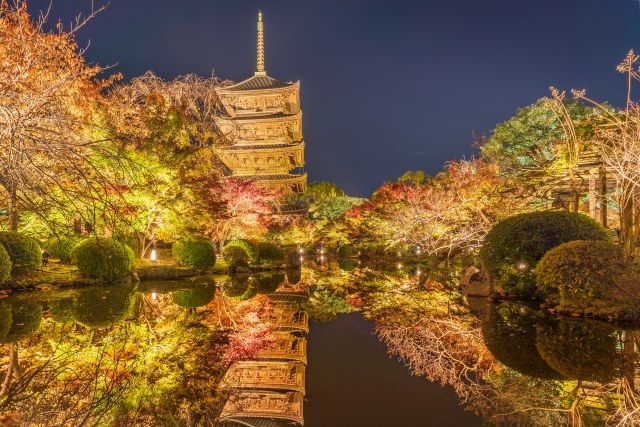
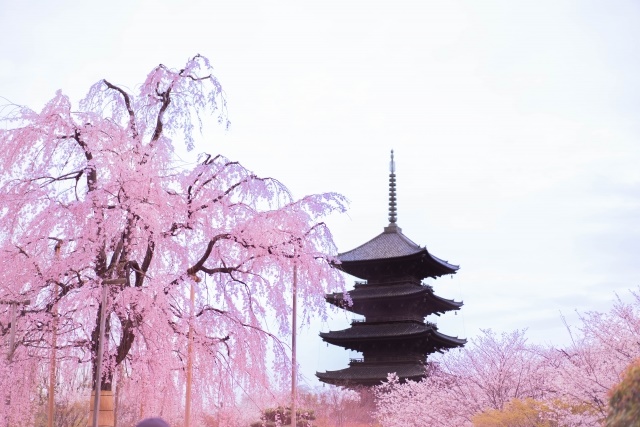
Instagram Worthiness:★★★★★
Photography Opportunity: All seasons
Location Information: ▶Map, Hours, Routes
Transportation Information: 1-minute bus ride from Kyoto Station
Kyoto Tower
yoto Tower, standing in front of Kyoto Station, is the world’s tallest non-steel structure. Resembling a lighthouse, it is Kyoto’s tallest building at 131 meters. The observation deck offers a 360-degree panoramic view of Kyoto with no obstructions, and the night view is particularly stunning. It is easily accessible from Kyoto Station and bus terminal, making it an ideal starting point for sightseeing in Kyoto.
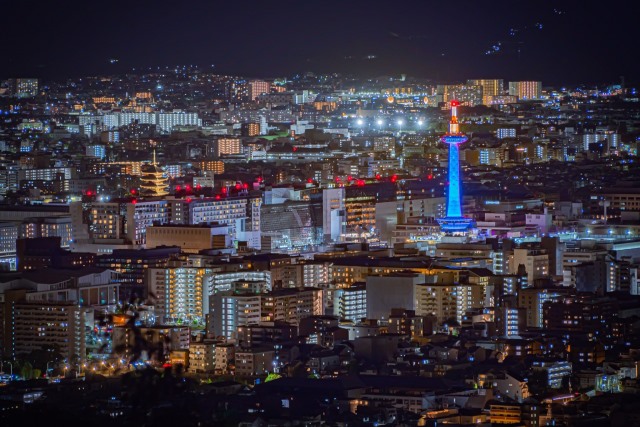
Instagram Worthiness:★★★★★
Photography Opportunity: All seasons
Location Information: ▶Map, Hours, Routes
Transportation Information: 1-minute walk from Kyoto Station
Nishiki Market
With a history of over 400 years, Nishiki Market, affectionately known as “Nishiki” by locals, is a narrow street lined with numerous shops. Located one street north of Shijo-dori, the 390-meter arcade houses about 130 stores. Here, you can find fresh ingredients and rare foods, offering a glimpse into Kyoto’s unique food culture and expert knowledge.
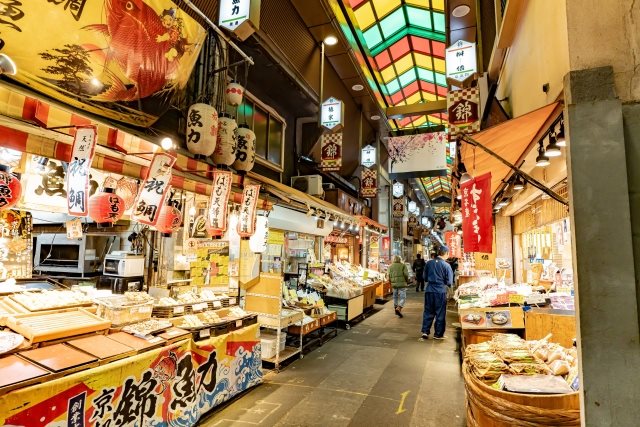
Instagram Worthiness:★★★★★
Photography Opportunity: All seasons
Location Information: ▶Map, Hours, Routes
Transportation Information:15-minute bus ride from Kyoto Station
Pontocho
Pontocho is a narrow street along the Kamo River, about 500 meters long, and is one of Kyoto’s traditional geisha districts. This area is home to many traditional tea houses and restaurants, as well as stylish restaurants housed in old buildings, making it a popular area among young people.
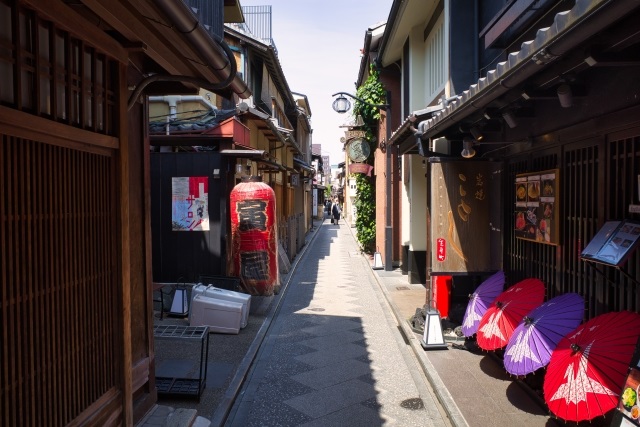
Instagram Worthiness:★★★★★
Photography Opportunity: All seasons
Location Information: ▶Map, Hours, Routes
Transportation Information: 13-minute bus ride from Kyoto Station
Rurikoin Temple
Located at the foot of Mount Hiei, Rurikoin Temple was originally a villa, featuring a beautiful Japanese garden and traditional buildings. Though usually closed to the public, it opens during spring and autumn. The view of the garden from the second floor, especially during the fall foliage, is famous. The garden, covered with blue moss, is vibrantly colored by the autumn leaves.
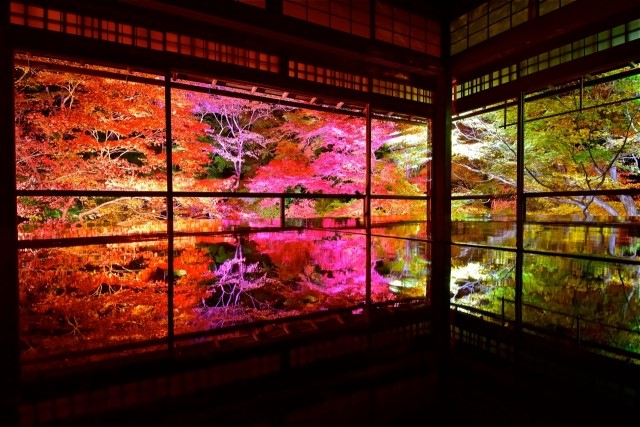
Instagram Worthiness:★★★★★
Photography Opportunity: Spring and Autumn
Location Information: ▶Map, Hours, Routes
Transportation Information: 50-minute bus ride from Kyoto Station
Shimogamo Shrine (Kamo-mioya Shrine)
Registered as a World Heritage Site, Shimogamo Shrine is one of the oldest shrines in Kyoto and is popular among women for its prayers for love and beauty. The path to the main hall is perfect for forest bathing, especially recommended for early morning walks. The unique “water fortune” omikuji, which reveals fortunes when immersed in water, can also be enjoyed here.
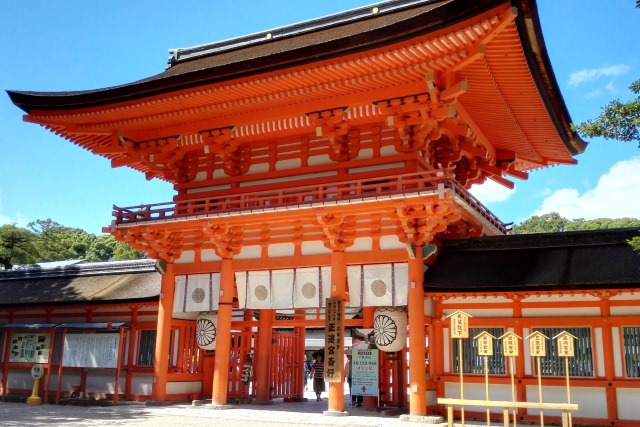
Instagram Worthiness:★★★★★
Photography Opportunity: All seasons
Location Information: ▶Map, Hours, Routes
Transportation Information: 30-minute bus ride from Kyoto Station
Kamigamo Shrine
Registered as a World Heritage Site, Kamigamo Shrine is the oldest shrine in Kyoto and is dedicated to the god of thunder, making it a guardian deity of the electrical industry. It hosts the Aoi Festival, one of Kyoto’s three major festivals.
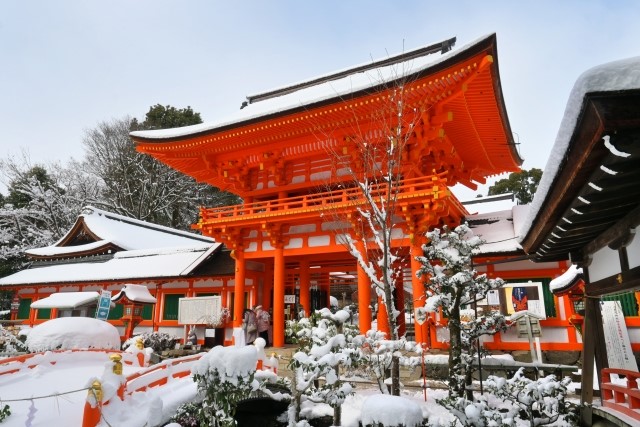
Instagram Worthiness:★★★★★
Photography Opportunity: All seasons
Location Information: ▶Map, Hours, Routes
Transportation Information: 40-minute bus ride from Kyoto Station
Kifune Shrine
Kifune Shrine is the head shrine of over 500 Kifune Shrines throughout Japan. This area is popular as a summer resort because it is cooler than the city. The “kawadoko,” platforms along the river for cooling down, are a summer tradition in Kyoto.
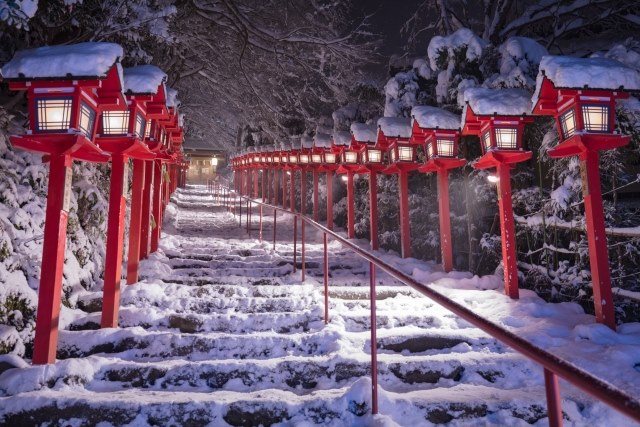
Instagram Worthiness:★★★★★
Photography Opportunity: All seasons
Location Information: ▶Map, Hours, Routes
Transportation Information: 33-minute walk from Kibuneguchi Station
Daitoku-ji Temple (Koto-in Temple)
Daitoku-ji Temple, founded in 1315, is a Zen temple in Kita Ward, Kyoto. Associated with tea master Sen no Rikyu, the temple has many tea rooms. While some areas are usually closed to the public, they open during the autumn foliage season, allowing visitors to appreciate the art and architecture.
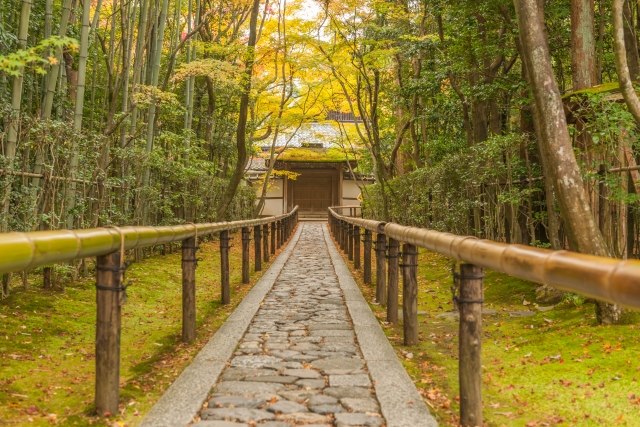
Instagram Worthiness:★★★★★
Photography Opportunity: All seasons
Location Information: ▶Map, Hours, Routes
Transportation Information: 5-minute bus ride from Kitaoji Station
Sanzen-in Temple
Sanzen-in Temple, located in Ohara, was relocated here from Mount Hiei by Saicho, a monk from the Heian period. The temple has been a retreat for nobles and monks seeking seclusion. Famous for its gardens, such as Juhyou-en and Yusei-en, the temple’s grounds are covered with moss. About 1,000 hydrangeas bloom here in season.
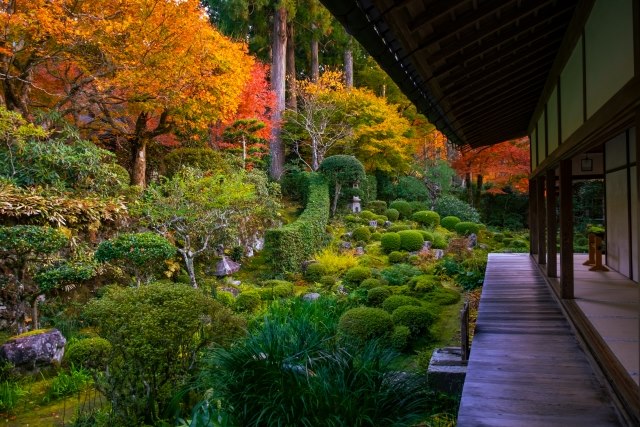
Instagram Worthiness:★★★★★
Photography Opportunity: All seasons
Location Information: ▶Map, Hours, Routes
Transportation Information: 22-minute bus ride from Kokusaikaikan Station
Aoi Matsuri
The Aoi Matsuri is a traditional festival in Kyoto, held annually on May 15th at Shimogamo Shrine and Kamigamo Shrine. The procession, about 8 kilometers long, features participants in Heian period costumes walking through the city. This festival, continuing for about 1,500 years, elegantly decorates early summer in Kyoto.
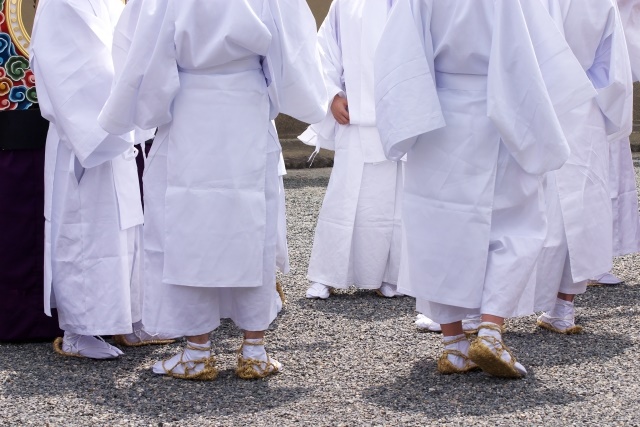
Instagram Worthiness:★★★★★
Photography Opportunity: May 15
Location Information: ▶Map, Hours, Routes
Transportation Information: 30-minute bus ride from Kyoto Station
Kurama-dera Temple
Kurama-dera Temple in Sakyo Ward is known as the place where Minamoto no Yoshitsune trained in his youth. The temple grounds include Yoshitsune Hall, dedicated to Yoshitsune, and the legend of the Tengu. Kurama-dera is also famous as a power spot and has over 1,200 years of history. Known for its cherry blossoms in spring and autumn foliage, it offers beautiful scenery throughout the year.
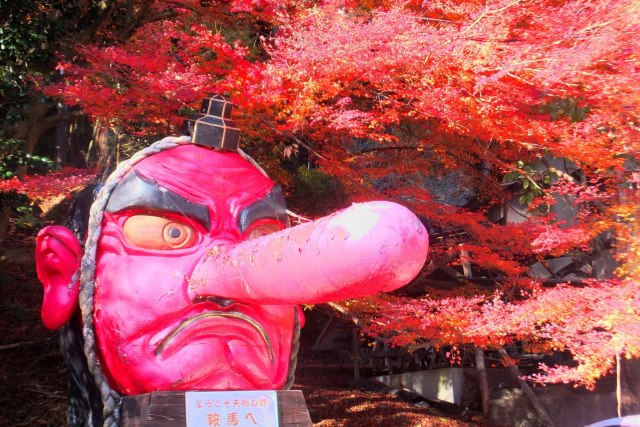
Instagram Worthiness:★★★★★
Photography Opportunity: All seasons
Location Information: ▶Map, Hours, Routes
Transportation Information: 3-minute walk from Kurama Station
Enko-ji Temple
Enko-ji Temple was established in 1601 by Tokugawa Ieyasu and also served as a school. It played a significant role in publishing, with wooden movable type still preserved. The temple is known for its cherry blossoms in spring and autumn foliage. From inside the temple, you can enjoy a grand view of the autumn leaves, resembling a large screen.
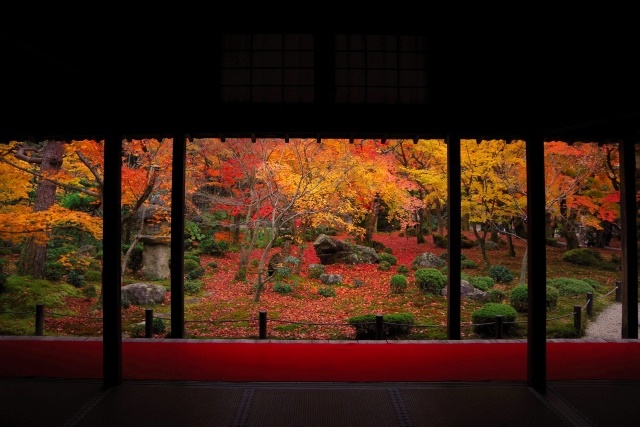
Instagram Worthiness:★★★★★
Photography Opportunity: Spring and Autumn
Location Information: ▶Map, Hours, Routes
Transportation Information: 9-minute bus ride and 10-minute walk from Kokusaikaikan Station
Kiyomizu-dera Temple
With a history of about 1,200 years, Kiyomizu-dera Temple is a World Heritage Site. This iconic tourist spot in Kyoto is famous for the “Stage of Kiyomizu,” which offers a panoramic view of the city. Known for its blessings for love and marital harmony, the temple’s three-story pagoda, standing at about 31 meters, is visible from afar. During autumn, around 1,000 maple trees turn vibrant colors, and the temple is illuminated at night, offering a different atmosphere from the daytime.
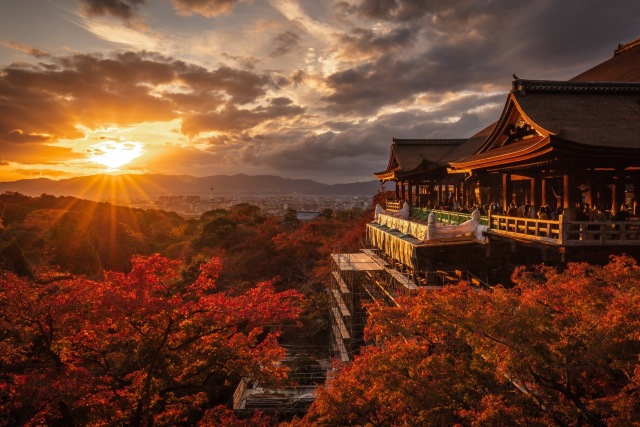
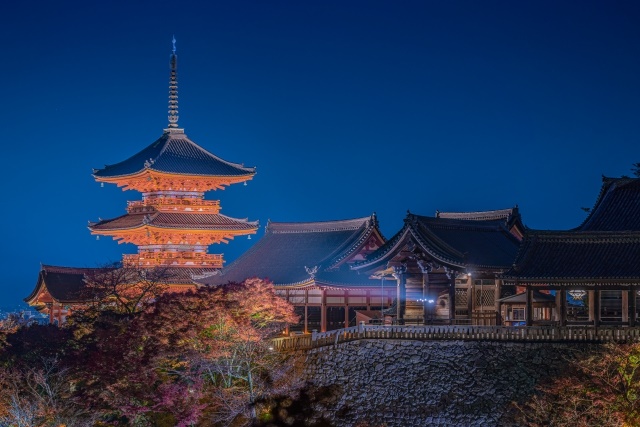
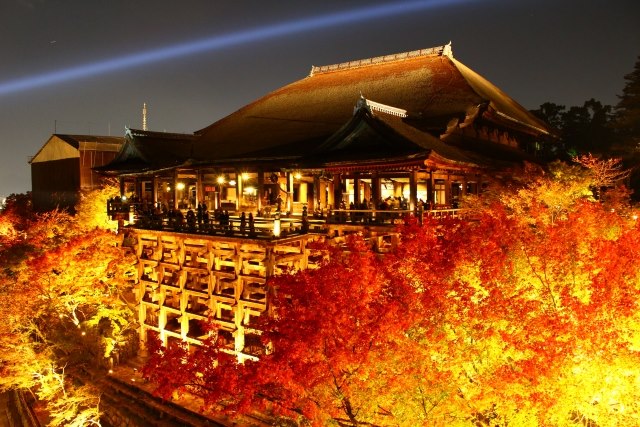
Instagram Worthiness:★★★★★
Photography Opportunity: All seasons
Location Information: ▶Map, Hours, Routes
Transportation Information: 16-minute bus ride from Kyoto Station
Ginkaku-ji Temple
Ginkaku-ji Temple, also known as Jisho-ji, is located in Sakyo Ward, Kyoto, and is the counterpart to Kinkaku-ji (the Golden Pavilion). The temple was originally the mountain villa of Ashikaga Yoshimasa, the eighth shogun of the Muromachi Shogunate, who reflected his aesthetic sense throughout the villa, which later became a temple after his death.
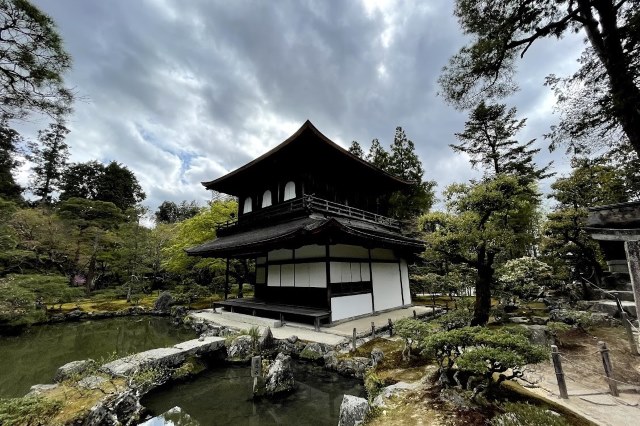
Instagram Worthiness:★★★★★
Photography Opportunity: All seasons
Location Information: ▶Map, Hours, Routes
Transportation Information: 37-minute bus ride from Kyoto Station
Heian Shrine
Heian Shrine was established in 1895 to commemorate the 1,100th anniversary of the capital’s relocation to Kyoto and enshrines Emperor Kanmu. Known for its vibrant vermilion buildings, including the main hall and the grand torii in Okazaki, the shrine is a cultural landmark in the Okazaki area, which also features museums and a zoo.
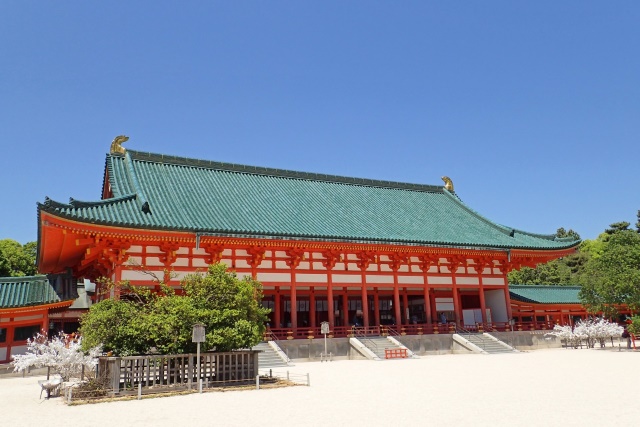
Instagram Worthiness:★★★★★
Photography Opportunity: All seasons
Location Information: ▶Map, Hours, Routes
Transportation Information: 32-minute bus ride from Kyoto Station
Yasaka Shrine
Yasaka Shrine, known locally as “Gion-san,” has protected Kyoto since before the Heian period. As the central shrine among Yasaka Shrines nationwide, it enshrines multiple deities and is a popular power spot.
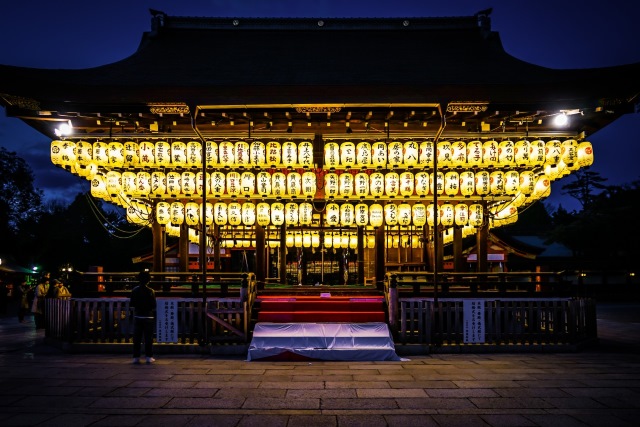
Instagram Worthiness:★★★★★
Photography Opportunity: All seasons
Location Information: ▶Map, Hours, Routes
Transportation Information:21-minute bus ride from Kyoto Station
Kennin-ji Temple
Kennin-ji Temple is Kyoto’s oldest Zen temple, founded in 1202 by a monk who studied Zen in China. The temple features the “Daihojoen,” a magnificent dry landscape garden, and famous paintings on the sliding doors and the ceiling’s twin dragons. “Karesansui” refers to Japanese gardens that represent water and mountains using only gravel and stones.
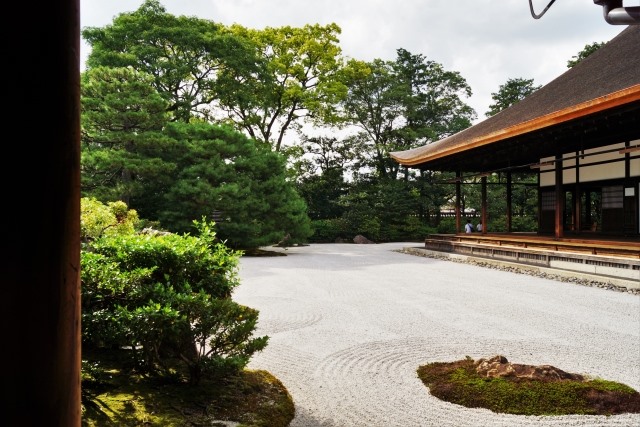
Instagram Worthiness:★★★★★
Photography Opportunity: All seasons
Location Information: ▶Map, Hours, Routes
Transportation Information: 16-minute bus ride from Kyoto Station
Honen-in Temple
Located slightly off the Philosopher’s Path, this temple was established by the monk Honen as a place for chanting the Nembutsu. The current main hall was rebuilt in 1680. The moss-covered thatched gate exudes a simple yet elegant atmosphere, harmonizing beautifully with the autumn leaves.
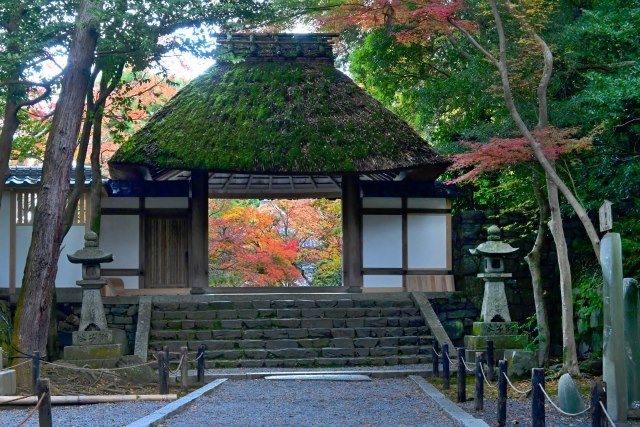
Instagram Worthiness:★★★★★
Photography Opportunity: Autumn
Location Information: ▶Map, Hours, Routes
Transportation Information: 38-minute bus ride from Kyoto Station
Zenrin-ji Eikando Temple
Known as “Eikando, the temple of autumn leaves,” Zenrin-ji Eikando is a historic temple founded in 853. Originally a Shingon Buddhist training ground, it became a Nembutsu dojo under the monk Eikan in the Heian period and is now known as Eikando. The temple’s main hall houses the famous “Mikaeri Amida” statue of Amitabha, and the multi-storied pagoda offers a panoramic view of Kyoto.
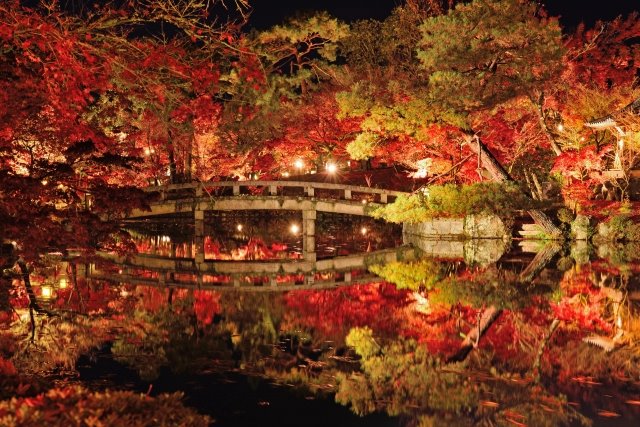
Instagram Worthiness:★★★★★
Photography Opportunity: Autumn
Location Information: ▶Map, Hours, Routes
Transportation Information: 32-minute bus ride from Kyoto Station
Sanneizaka
Sanneizaka, also known as Sannen-zaka, is a popular tourist area in Higashiyama, Kyoto, and is part of the path leading to Kiyomizu-dera Temple. This area connects Yasaka Shrine, Maruyama Park, Kodaiji Temple, and Hokanji Temple (Yasaka Pagoda) with Kiyomizu-dera Temple. The streets are lined with souvenir shops, pottery stores, and traditional restaurants, bustling with tourists.
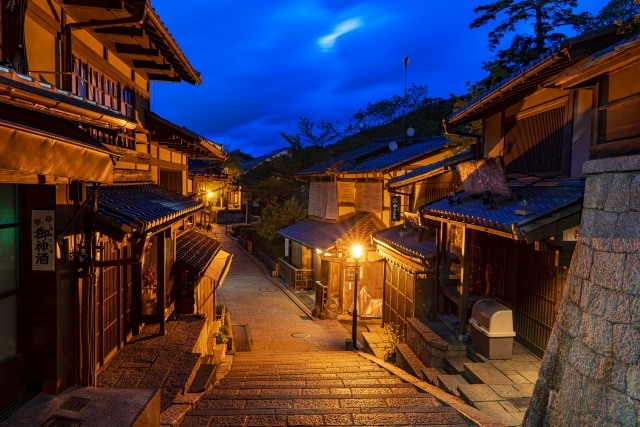
Instagram Worthiness:★★★★★
Photography Opportunity: All seasons
Location Information: ▶Map, Hours, Routes
Transportation Information: 16-minute bus ride from Kyoto Station
Philosopher’s Path
The Philosopher’s Path is a roughly 2-kilometer-long walkway connecting Ginkaku-ji Temple and Nanzen-ji Temple (Wakaouji Shrine). The waterway running alongside the path originates from Lake Biwa, Japan’s largest lake. This path is also a famous cherry blossom spot, attracting many visitors in spring.
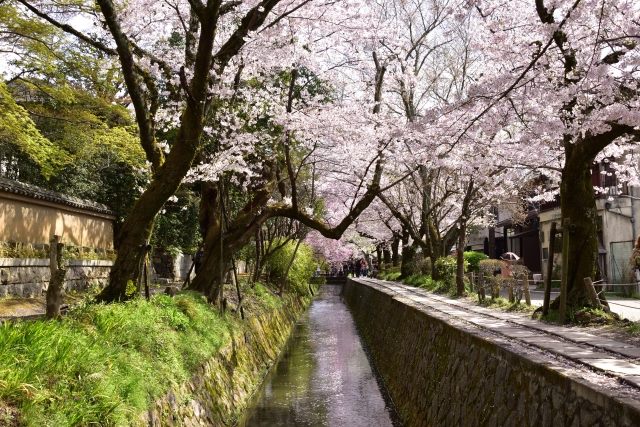
Instagram Worthiness:★★★★★
Photography Opportunity: Spring
Location Information: ▶Map, Hours, Routes
Transportation Information: 40-minute bus ride from Kyoto Station
Sanjusangendo Temple
Sanjusangendo Temple, built in 1164 by Taira no Kiyomori, has an interior with 33 spaces between columns, hence the name. The hall houses 1,001 statues of Kannon, including some from the Heian period.
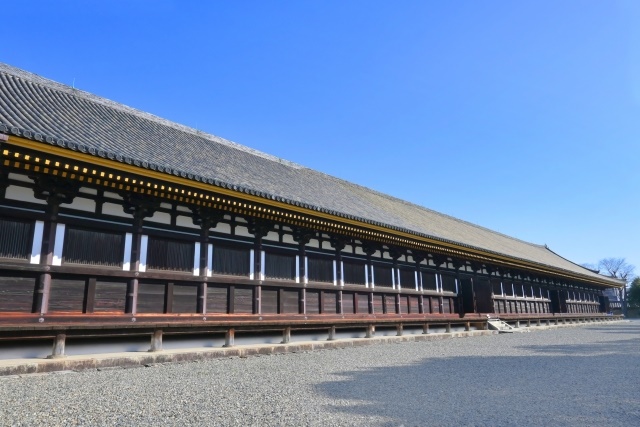
Instagram Worthiness:★★★★★
Photography Opportunity: All seasons
Location Information: ▶Map, Hours, Routes
Transportation Information: 9-minute bus ride from Kyoto Station


